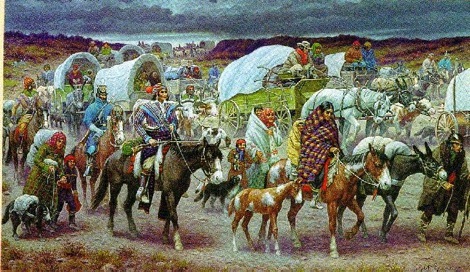In 1830 the Congress of the United States passed the "Indian Removal Act." It
was this denial of the Indians most fundamental rights that led to a celebrated
confrontation between two branches of the federal government in the persons of
the venerable chief justice of the United States, John Marshall, and the president,
Andrew Jackson The Cherokee would have to agree to removal in a treaty that
would need ratification by the Senate.
In 1835 Treaty of New Echota gave President Jackson the legal document he
needed to remove the Cherokee. Though few Senators vocally opposed the law, it
passed by a single vote and the ratification sealed the Cherokee’s fate. Though
initially delayed by General Wool’s resignation, General Winfield Scott, arrived at
New Echota on May 17, 1838 with 7000 men and early that summer began the
invasion of the Cherokee Nation.




